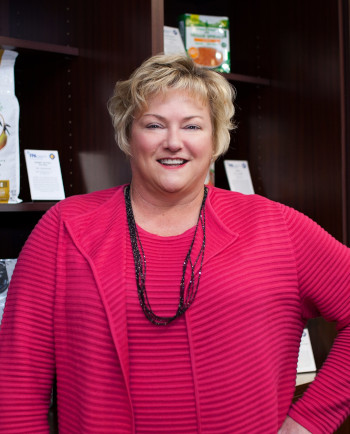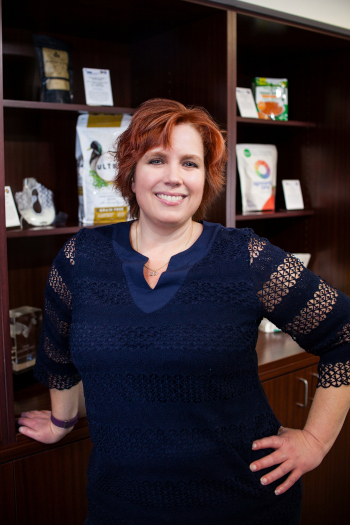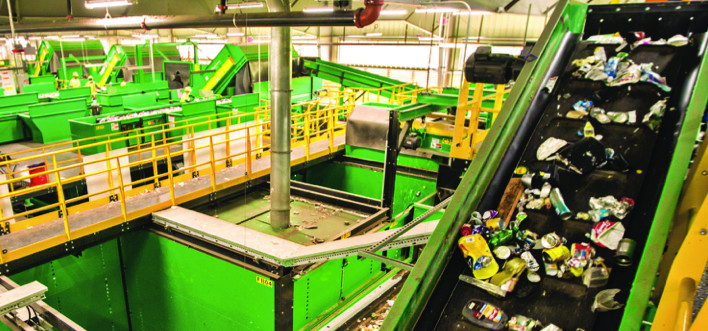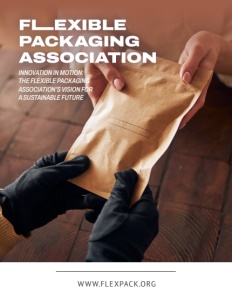The Flexible Packaging Association
Innovation in Motion: The Flexible Packaging Association’s Vision for a Sustainable Future
With a commitment to sustainability, technological advancements, and the transformative journey towards a circular economy, the flexible Packaging Association ‘packs’ a bold agenda
In the bustling corridors of the packaging industry, the Flexible Packaging Association (FPA) stands as a paragon of innovation, adaptability, and sustainability. As its name suggests, the FPA represents the manufacturers of flexible packaging, a unique format that can effortlessly shift its shape to accommodate the product it houses.

Alison Keane, President and CEO
This adaptability, as Alison Keane, the President & CEO of the FPA, elucidates, is the very essence of the association’s identity.
The financial magnitude of this industry is nothing short of impressive. Keane reveals that the flexible packaging industry is a colossal $42.9 billion enterprise, employing around 80,000 workers across the United States. It ranks as the second-largest packaging sector in the U.S., trailing only behind corrugated cardboard.
However, on the global stage, flexible packaging reigns supreme. This dominance is attributed to the myriad sustainability benefits it offers. Consumer product giants, such as Pepsi and General Mills, have increasingly gravitated towards flexible packaging.
“Walk into any store, and you’ll find that nearly 70% of the products are housed in flexible packaging,” Keane states.
This shift is driven by brands’ commitment to reducing their carbon footprint. Flexible packaging, with its minimal material usage, translates to less waste, reduced greenhouse gas emissions, and a significant decrease in water and energy consumption.
Navigating the Winds of Change: The FPA’s Proactive Approach
In the ever-evolving landscape of the packaging industry, the FPA remains attuned to the concerns and challenges faced by its members. Keane outlines the FPA’s foundational pillars: advocacy, promotion, research and information, and educational networking opportunities.
“Advocacy didn’t used to be as big of a role,” she admits. Historically, the FPA’s focus was more on providing research, promoting communication to the end consumer, and fostering networking opportunities within this rapidly expanding sector of the packaging industry.
However, the winds began to shift about five years ago. Recognizing the burgeoning challenges, especially those surrounding plastic packaging, the FPA took a proactive stance. They realized that it wasn’t enough to leave the responsibility of addressing packaging issues solely to consumer brands. Over the past half-decade, the FPA has significantly bolstered its advocacy efforts, redirecting resources both financially and otherwise.
The association also pivoted its promotional strategy, targeting consumers directly. Keane highlights a crucial insight: “The consumer doesn’t know why a brand would pick the packaging they use. And they don’t know the sustainability benefits of flexible packaging.” In response, the FPA has channeled its resources to combat the “packaging and plastic backlash,” as Keane terms it.
Yet, every challenge also presents an opportunity. The FPA views the current climate as a chance to educate and spread its message about carbon neutrality and the environmental benefits of flexible packaging.
“It’s two-pronged,” Keane explains. On one hand, the FPA adopts a defensive stance, ensuring that the industry’s growth isn’t stymied by bans or restrictions. On the other, they seize the opportunity to spotlight the positive aspects of flexible packaging, ensuring that the narrative around it is both informed and balanced.
Steering Through Legislative Labyrinths: The FPA’s Advocacy in Action
The FPA is not just about promoting the benefits of flexible packaging; it’s also about navigating the intricate maze of legislation that impacts the industry. Keane sheds light on the FPA’s approach to these challenges.
“We have what’s called the Circularity Committee, which is the advocacy committee,” she explains. This committee delves deep into the various pieces of legislation that could potentially influence their packaging type. They collaborate closely with consumer brands to ensure that both legislative and voluntary goals are met.
Keane also highlights the pivotal role of the Product Stewardship Committee. This committee grapples with the technical challenges of implementing post-consumer recycled content, introducing more bio-based products, and transitioning from plastic to paper, all while ensuring the preservation of product quality.
“We still need the shelf life of our food and the sterility of our health and medical products,” Keane emphasizes. “You don’t want to sacrifice that to get to that final recyclability type of goal.”
When asked about specific pieces of legislation the FPA is currently focusing on, Keane’s response is comprehensive. One major area is extended producer responsibility (EPR).
“We see extended producer responsibility as a way to ensure investment in modernizing the U.S. recycling system,” she states. EPR aims to update the U.S. recycling system to accommodate flexible packaging, which currently isn’t collected curbside. Through EPR, fees would be imposed on all packaging, funneled through a nonprofit run by the brand owners, and then directed towards infrastructure investment.
Keane further elaborates on the need for advanced recycling, particularly chemical recycling. Unlike the more common mechanical recycling, chemical recycling offers a higher-value process that can restore materials to an almost virgin-like state. This is crucial for packaging that requires sterility, such as food and medical products.
The FPA’s advocacy efforts span across various states, each with its unique legislative challenges. From labeling bills that could potentially cause discrepancies in recyclability labels across states to post-consumer recycled content mandates in separate pieces of legislation, the FPA is actively involved in shaping the narrative.
The Evolution of Packaging: Brands Embracing Flexibility
In the vast expanse of the consumer goods market, the choice of packaging is paramount. It’s not just about aesthetics or branding; it’s about functionality, sustainability, and cost-effectiveness. Keane delves into the considerations major brands like PepsiCo make when deciding on their packaging choices.
“Pepsi is a good example,” Keane begins. “If you think about the Pepsi side of it, you’re still in rigid bottles and cans, and that’s because it’s a carbonated drink.” The carbonation in beverages like Pepsi presents challenges for flexible packaging. Non-carbonated drinks, like Capri Sun by Kraft Heinz, are more amenable to the flexible format.
From a brand owner’s perspective, the choice of packaging is dictated by the product’s needs. “They need the right package for their product,” Keane emphasizes. If flexible packaging offers both environmental and cost benefits without compromising the product’s quality, brands are more inclined to adopt it. However, the ultimate decision hinges on the end consumer’s experience. The freshness, taste, and overall quality of the product cannot be sacrificed for the sake of packaging innovation.
Keane’s optimism about the future of flexible packaging is palpable. “The growth is amazing year over year, and the innovation is too,” she remarks, “Every month there’s something new and there’s a technical innovation that allows something that couldn’t have been put in flexible before to now be able to be put in flexible.”
Amplifying the Message: The FPA’s Multifaceted Communication Strategy
In an age where information is abundant, yet attention spans are fleeting, effective communication is paramount. The FPA recognizes this and has crafted a multifaceted strategy to keep its members informed and engaged.

Dani Diehlmann, Vice President of Communications
Dani Diehlmann, Vice President of Communications, outlines the association’s approach. “We push a lot of our information out on social media,” she begins, listing platforms like [Twitter] X, Facebook, LinkedIn, and Instagram. Even TikTok has found a place in the association’s communication arsenal, albeit to a lesser extent.
Through these channels, the FPA disseminates a plethora of reports, from industry insights and market data to sustainability studies. “We’ve conducted several case studies over the years to back our claims that flexible packaging is the environmental option for packaging,” Diehlmann notes. This proactive approach ensures that consumers, brands, legislators, NGOs, and other stakeholders remain informed.
Trade shows and conferences also play a pivotal role in the FPA’s outreach. Not only do they maintain a presence with booths and informational materials, but Keane often presents at these events, furthering the educational mission. Diehlmann elaborates on their annual events, “We hold two conferences a year. Our annual meeting is for our members only, providing updates on the industry, trends, and market data. Our fall conference delves deeper into the technical aspects of the industry.”
While the FPA itself doesn’t offer training sessions due to its compact team size, collaboration with other organizations fills this gap. Diehlmann lists several pivotal partners, including Roll2Roll, TAPPI, PRINTING United, the Society of Plastics Engineers, and the Packaging Machinery Manufacturers Institute (PMMI).
“We’re all in it together,” she emphasizes, highlighting the importance of collaboration in amplifying their message. “Numbers help push the data out more. Partnerships and collaborations are very important to the industry.”
Charting the Future: Sustainability and Technological Evolution in Flexible Packaging
In the ever-evolving landscape of the packaging industry, the FPA remains resolute in its commitment to sustainability and innovation. Keane emphasizes the need to view recycling as just one facet of a product’s sustainability journey. “We need to ensure that we don’t get our products banned or restricted based on current recyclability,” she adds, advocating for a sustainable funding mechanism for a dynamic recycling system.
Harmonization of recycling mandates across states is another pressing concern. Keane highlights the challenges of differing recycling mandates and labeling requirements across states, emphasizing the need for federal intervention. “Labeling for one state over another state isn’t viable for the consumer brands,” she notes.
When asked about the impact of technology, especially in the wake of the COVID-19 pandemic, Keane offers a comprehensive perspective. She touches upon the myriad ways technology intersects with the industry, from packaging innovation and AI to robotics. “It impacts almost every single facet, from manufacturing operations to consumer interaction and recycling,” she observes.
The FPA’s commitment to staying abreast of technological trends is evident. Keane mentions collaborations with organizations like the National Association of Manufacturers (NAM), the U.S. Chamber, PMMI, and others. These partnerships enable the FPA to disseminate crucial information to its members and remain at the nexus of what’s coming next on the horizon.
As the FPA charts its course for the future, it’s evident that sustainability, technological innovation, and collaboration will remain at its core, ensuring that the association and its members continue to lead the way in the packaging industry.
AT A GLANCE
Flexible Packaging Association (FPA)
What: An association dedicated to promoting the benefits of flexible packaging, advocating for sustainability, and driving technological innovation in the industry.
Where: United States
Website: www.flexpack.org


